Abstract
Commercial fermented 0sausages that contained significant numbers of viable coagulase-positive staphylococci were found to have the growth localized in the outermost areas of the sausage where oxygen tension was highest. Staphylococci were found to be more acid-tolerant aerobically than anaerobically. With chemical acidulation of sausage, growth could be controlled both aerobically and anaerobically with approximately 1.5% glucono delta lactone. Biological acidulation with a high inoculum of Pediococcus cerevisiae inhibited anaerobic staphylococcal growth but failed to suppress aerobic growth completely. A staphylococcal count of approximately 4 × 107 cells/g of sausage appeared to be necessary to produce detectable enterotoxin A within 24 hr in sausage. A minor difference existed in the relative rates of production of the different types of enterotoxin. Detectable enterotoxin A was produced in 24 hr in sausage held in atmospheres containing 10, 15, and 20% oxygen. In an atmosphere containing 5% oxygen, toxin was detected after 48 hr of incubation. No toxin was detected after 120 hr under anaerobic conditions. Most staphylococcal strains tested initiated growth and produced detectable enterotoxin aerobically at a pH of 5.1 in broth media. Anaerobically, however, most strains failed to produce detectable enterotoxin below pH 5.7.
Full text
PDF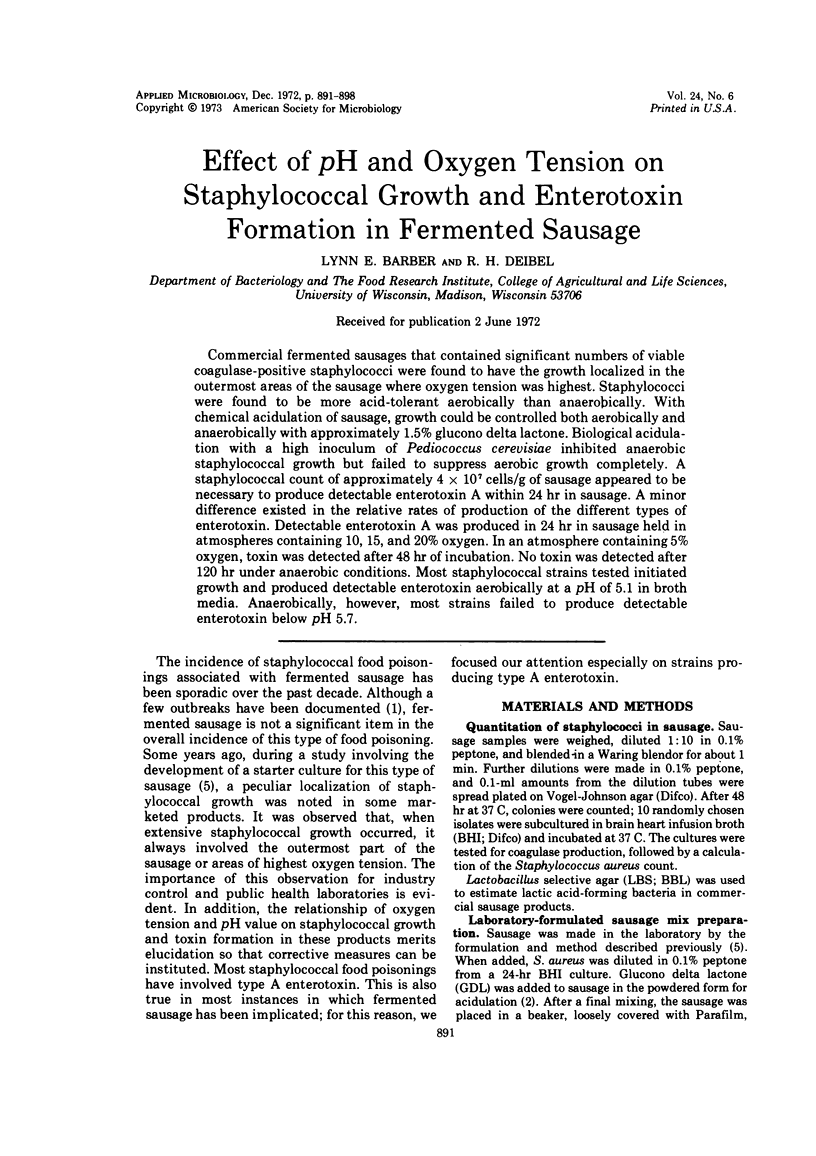
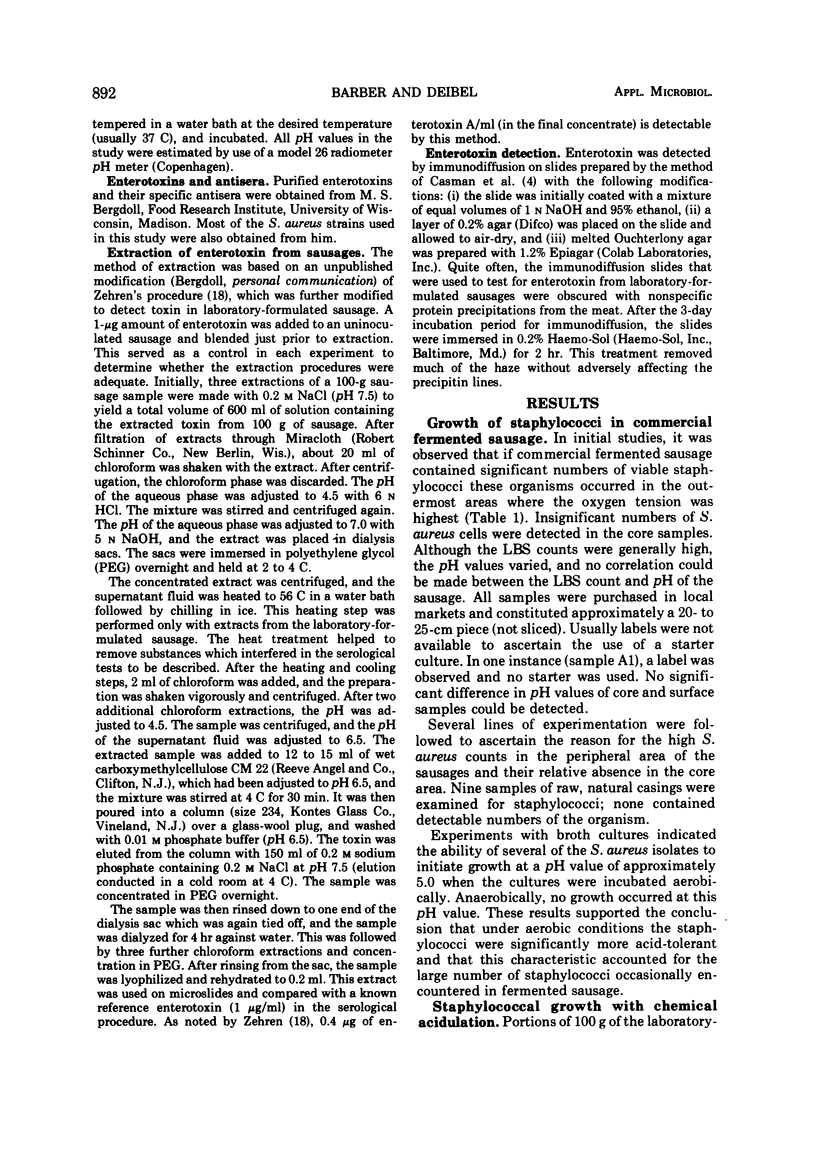
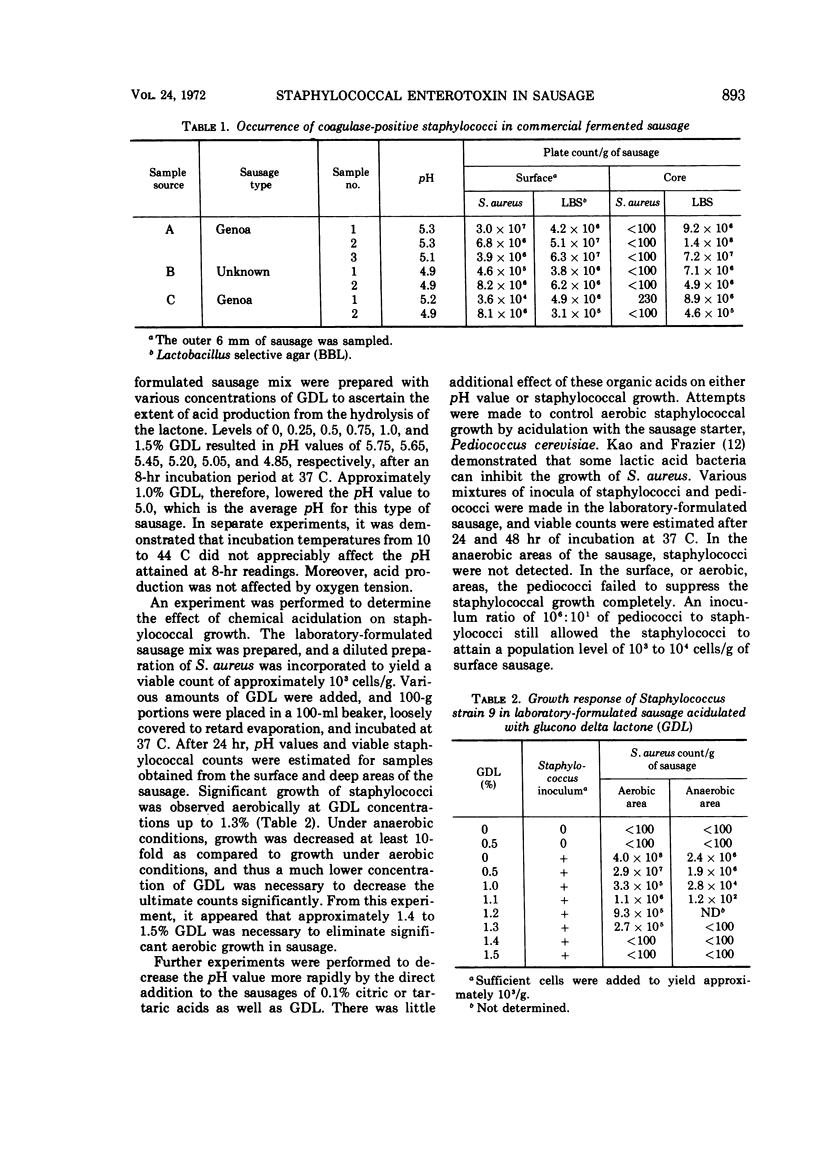
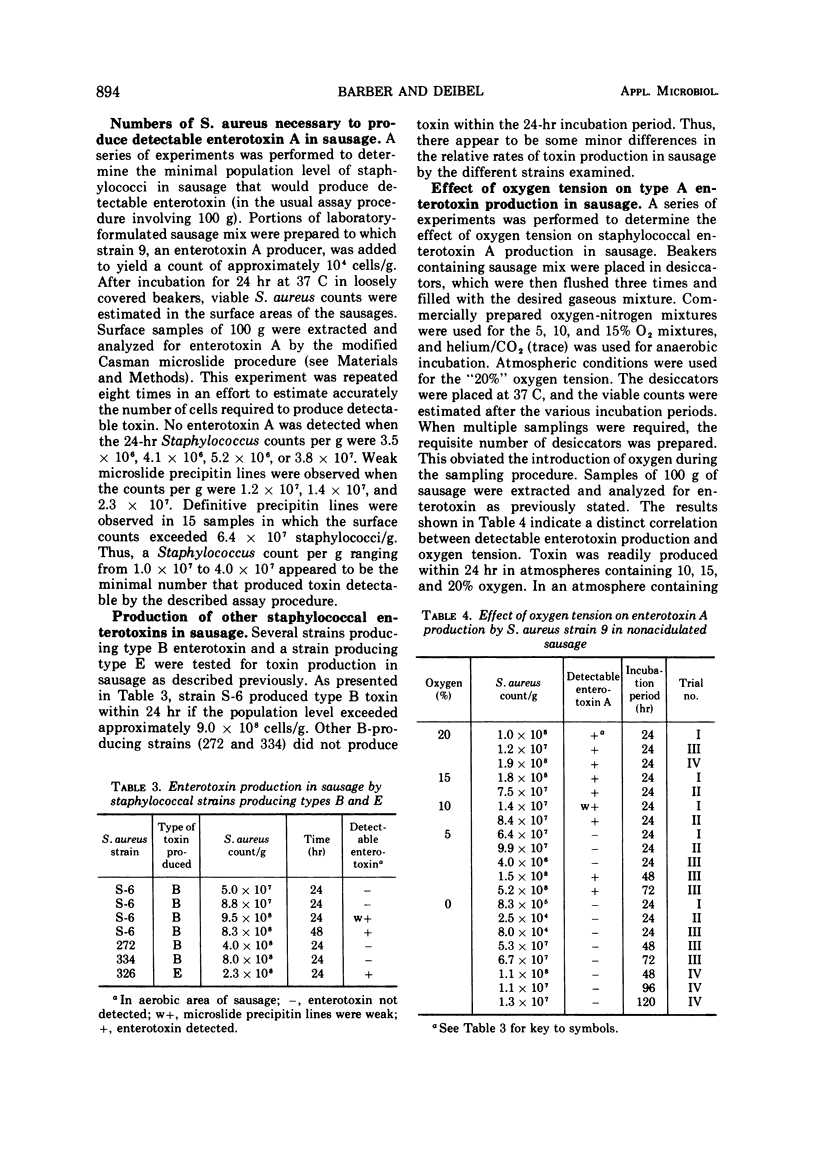
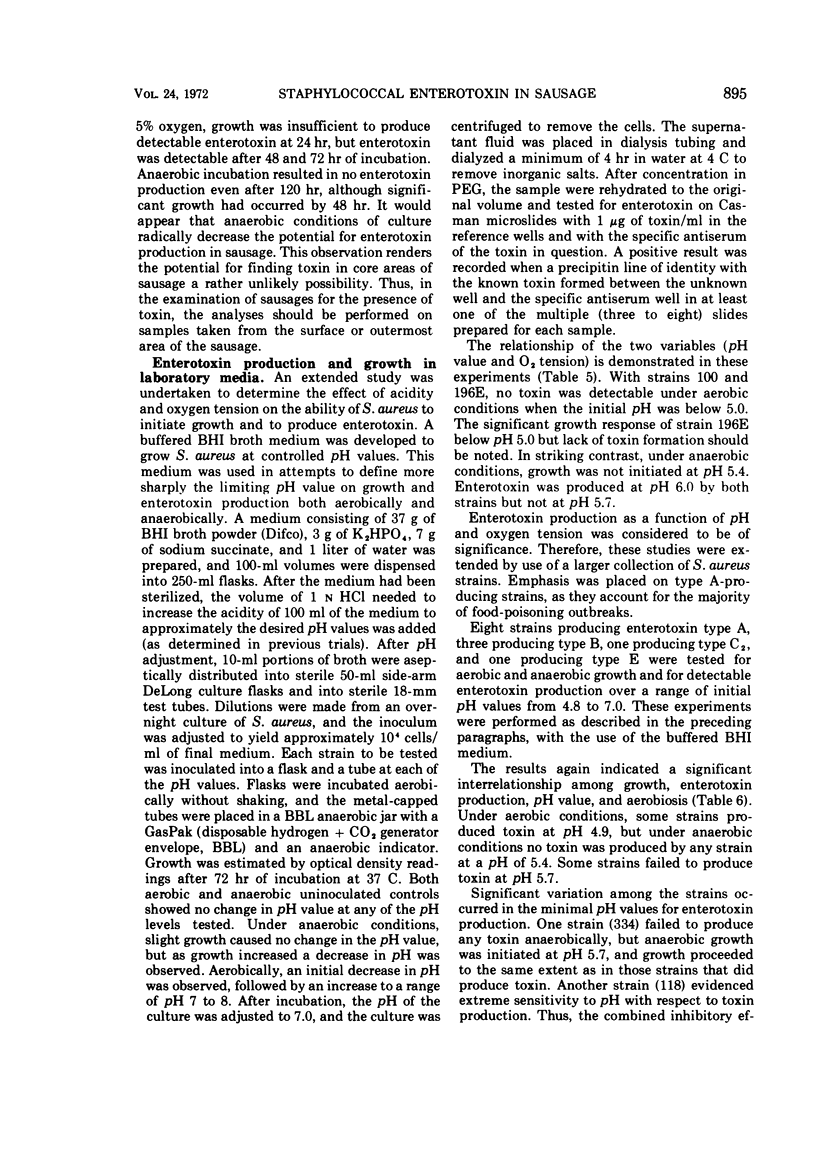
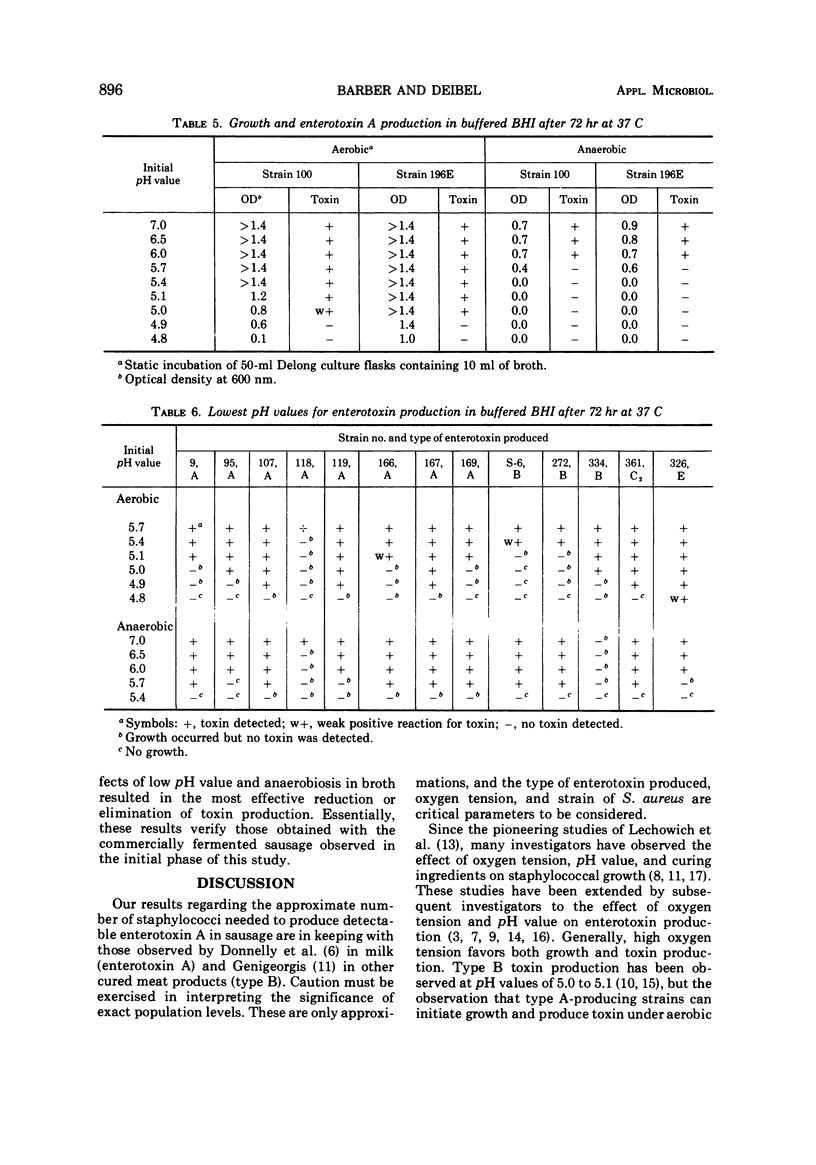
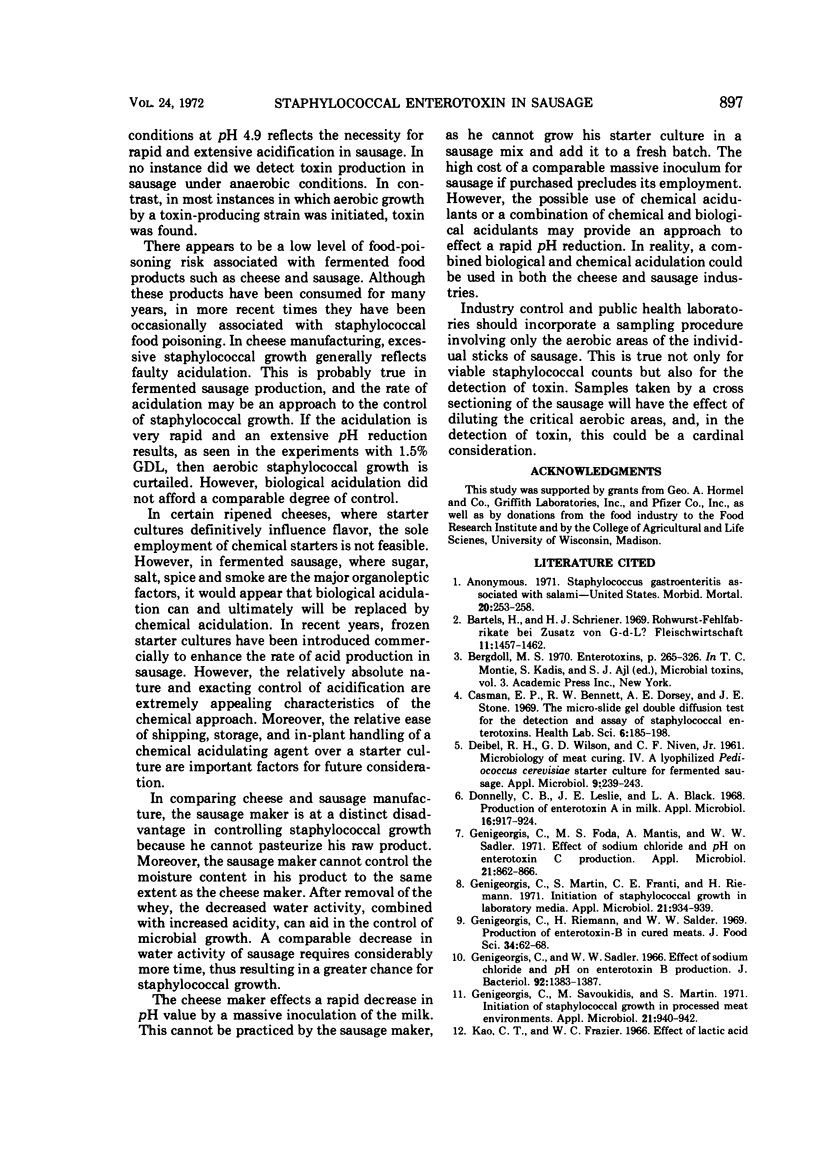

Selected References
These references are in PubMed. This may not be the complete list of references from this article.
- Casman E. P., Bennett R. W., Dorsey A. E., Stone J. E. The micro-slide gel double diffusion test for the detection and assay of staphylococcal enterotoxins. Health Lab Sci. 1969 Oct;6(4):185–198. [PubMed] [Google Scholar]
- DEIBEL R. H., WILSON G. D., NIVEN C. F., Jr Microbiology of meat curing. IV. A lyophilized Pediococcus cerevisiae starter culture for fermented sausage. Appl Microbiol. 1961 May;9:239–243. doi: 10.1128/am.9.3.239-243.1961. [DOI] [PMC free article] [PubMed] [Google Scholar]
- Donnelly C. B., Leslie J. E., Black L. A. Production of enterotoxin A in milk. Appl Microbiol. 1968 Jun;16(6):917–924. doi: 10.1128/am.16.6.917-924.1968. [DOI] [PMC free article] [PubMed] [Google Scholar]
- EVANS J. B., LECHOWICH R. V., NIVEN C. F., Jr Effect of curing ingredients and procedures on the survival and growth of staphylococci in and on cured meats. Appl Microbiol. 1956 Nov;4(6):360–363. doi: 10.1128/am.4.6.360-363.1956. [DOI] [PMC free article] [PubMed] [Google Scholar]
- Genigeorgis C., Foda M. S., Mantis A., Sadler W. W. Effect of sodium chloride and pH on enterotoxin C production. Appl Microbiol. 1971 May;21(5):862–866. doi: 10.1128/am.21.5.862-866.1971. [DOI] [PMC free article] [PubMed] [Google Scholar]
- Genigeorgis C., Martin S., Franti C. E., Riemann H. Initiation of staphylococcal growth in laboratory media. Appl Microbiol. 1971 May;21(5):934–939. doi: 10.1128/am.21.5.934-939.1971. [DOI] [PMC free article] [PubMed] [Google Scholar]
- Genigeorgis C., Sadler W. W. Effect of sodium chloride and pH on enterotoxin B production. J Bacteriol. 1966 Nov;92(5):1383–1387. doi: 10.1128/jb.92.5.1383-1387.1966. [DOI] [PMC free article] [PubMed] [Google Scholar]
- Genigeorgis C., Savoukidis M., Martin S. Initiation of staphylococcal growth in processed meat environments. Appl Microbiol. 1971 May;21(5):940–942. doi: 10.1128/am.21.5.940-942.1971. [DOI] [PMC free article] [PubMed] [Google Scholar]
- Markus Z. H., Silverman G. J. Factors affecting the secretion of staphylococcal enterotoxin A. Appl Microbiol. 1970 Sep;20(3):492–496. doi: 10.1128/am.20.3.492-496.1970. [DOI] [PMC free article] [PubMed] [Google Scholar]
- Reiser R. F., Weiss K. F. Production of staphylococcal enterotoxins A, B, and C in various media. Appl Microbiol. 1969 Dec;18(6):1041–1043. doi: 10.1128/am.18.6.1041-1043.1969. [DOI] [PMC free article] [PubMed] [Google Scholar]


